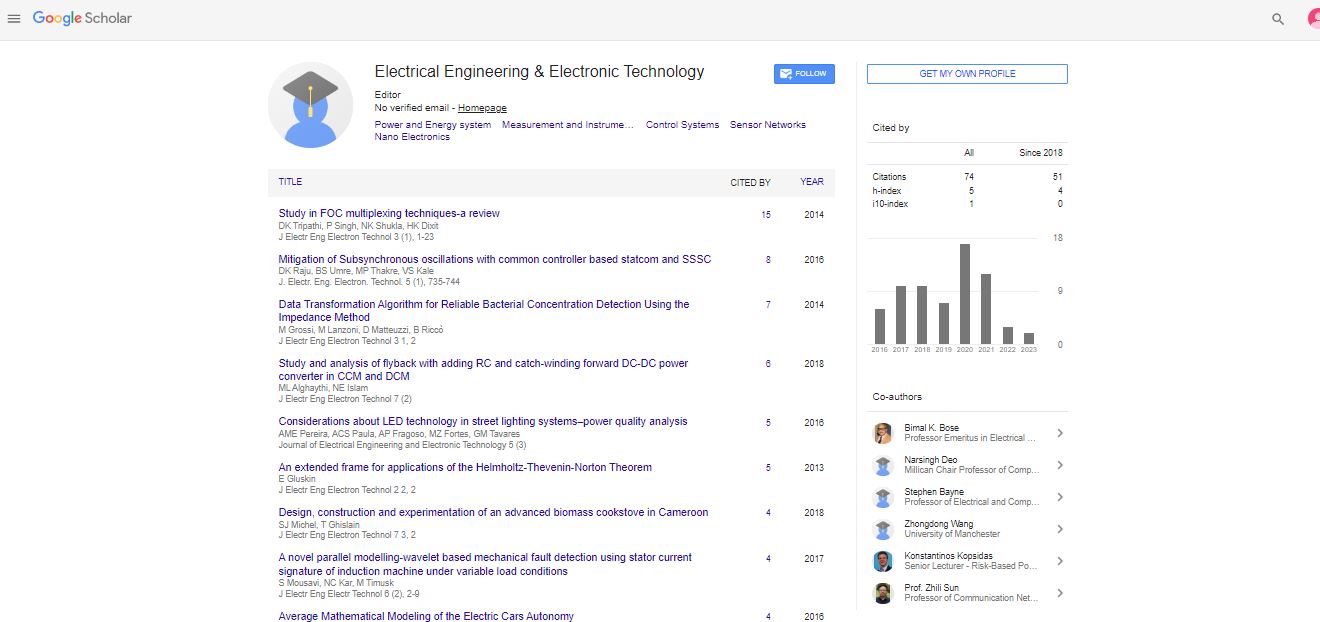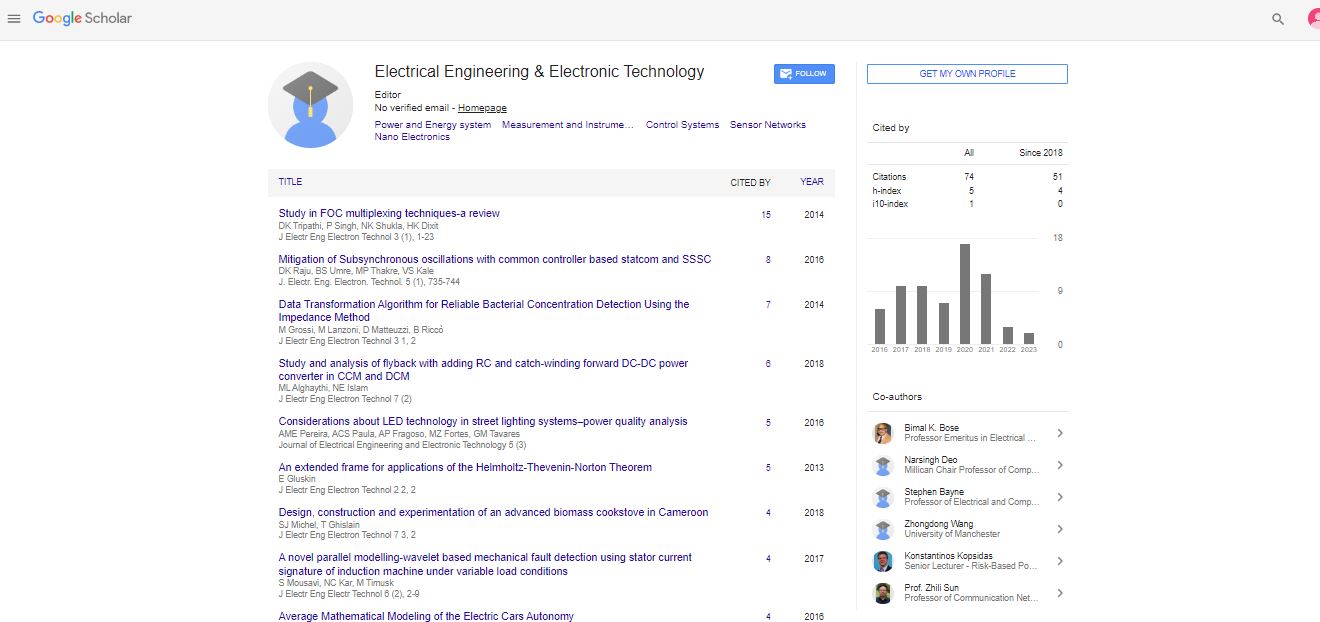Editorial, J Electr Eng Electron Technol Vol: 14 Issue: -1
Electrical Machines: The Backbone of Modern Power Systems
Corven E Crucell*
Department of Electrical and Computer Engineering, Leiden University, Netherlands
- *Corresponding Author:
- Corven E Crucell
Department of Electrical and Computer Engineering, Leiden University, Netherlands
E-mail: corven038@gmail.com
Received: 01-Jan-2025, Manuscript No. jeeet-25-169995; Editor assigned: 4-Jan-2025, Pre-QC No. jeeet-25-169995 (PQ); Reviewed: 18-Jan-2025, QC No. jeeet-25-169995; Revised: 25-Jan-2025, Manuscript No. jeeet-25-169995 (R); Published: 30-Jan-2025, DOI: 10.4172/2325-9838.1000987
Citation: Corven EC (2025) Electrical Machines: The Backbone of Modern Power Systems. J Electr Eng Electron Technol 14: 987
Introduction
Electrical machines play a crucial role in today’s technological and industrial landscape. From household appliances to massive industrial systems, these machines are at the heart of electrical energy conversion. Broadly classified into motors and generators, electrical machines either convert electrical energy into mechanical energy or vice versa [1]. Their application spans power generation, transportation, automation, and more, making them essential components in modern infrastructure.
Discussion
Electrical machines are generally divided into two main types: static machines (like transformers) and rotating machines (such as motors and generators). Rotating machines are further categorized into AC (alternating current) and DC (direct current) machines, each with its specific design, operation, and use cases [2].
DC machines, though older in design, are still used where precise speed control is required. They consist of a stator and a rotor with a commutator to switch the current direction. DC motors are commonly found in electric vehicles, robotics, and small appliances [3].
AC machines, which include synchronous and asynchronous (induction) motors, are more widely used due to their simplicity, robustness, and efficiency. Induction motors, especially, are the workhorses of industry, powering everything from fans and pumps to conveyor belts. Synchronous machines, while more complex, are crucial in power plants for generating electricity at a constant frequency [4].
Transformers, although not rotating machines, are vital in electrical power systems. They step voltage levels up or down, enabling efficient power transmission over long distances. Without transformers, power loss in transmission lines would be significantly higher, making large-scale distribution impractical.
The efficiency of electrical machines has seen significant improvements over the years, thanks to advancements in materials, design, and control systems. Modern machines often incorporate sensors and microcontrollers for better performance and energy savings, especially in industries that require automation and precision [5].
The integration of renewable energy sources, such as wind and solar, has also increased the demand for reliable electrical machines. Wind turbines use synchronous generators, while solar inverters rely on efficient transformers and control systems. As the world shifts toward clean energy, the role of electrical machines continues to evolve, adapting to new technologies and sustainability goals.
Conclusion
Electrical machines are foundational to the functioning of modern society. Their ability to efficiently convert and control energy makes them indispensable across numerous applications. As industries push for higher efficiency, automation, and cleaner energy, the importance of developing more advanced and sustainable electrical machines will only grow. Understanding their principles, types, and functions is essential for engineers, technicians, and anyone involved in the energy or manufacturing sectors. With ongoing innovations, electrical machines will continue to drive progress and power the future.
REFERENCES
- Anderson B (2015). Interweaving knowledge resources to address complex environmental health challenges Environ. Health Perspect.123: 1095-1099.
- Barnes J (2013). Contribution of anthropology to the study of climate change Nat. Clim Chang. 3: 541-544.
- Choquet A (2018). Governing the Southern Ocean: the science-policy interface as thorny issue Environ. Sci Policy. 89: 23-29.
- Clayton S (2016). Expanding the role for psychology in addressing environmental challenges. Am Psychol.71: 199-215.
- Dunn G (2017). The role of science-policy interface in sustainable urban water transitions: lessons from Rotterdam Environ. Sci Policy. 73:71-79.
Indexed at, Google scholar, Cross ref
Indexed at, Google scholar, Cross ref
Indexed at, Google scholar, Cross ref
 Spanish
Spanish  Chinese
Chinese  Russian
Russian  German
German  French
French  Japanese
Japanese  Portuguese
Portuguese  Hindi
Hindi 
